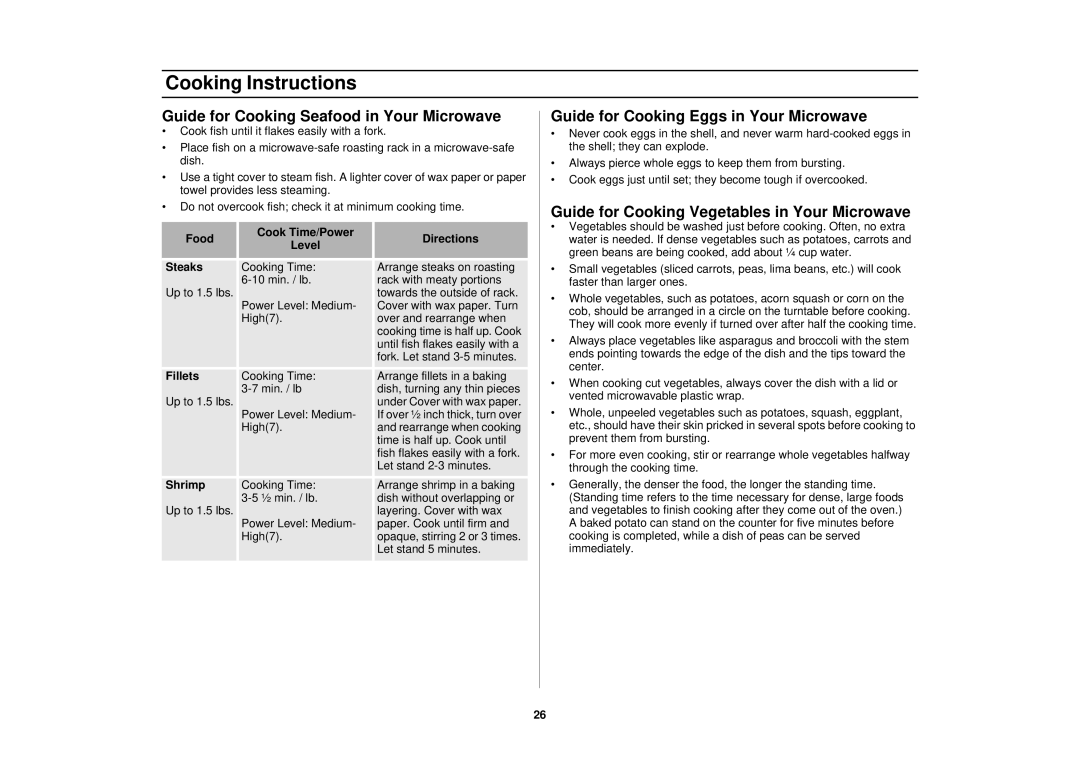MO1450BA, MO1450CA, MO1650CA, MO1650BA, MO1650WA specifications
Samsung has long been a leader in kitchen appliances, and its range of microwave ovens exemplifies the brand's commitment to innovation and quality. Among their standout models are the Samsung MO1450CA, MO1450BA, SMH7150WC, SMH7150CC, and MO1650CA, each designed to cater to diverse cooking needs.The Samsung MO1450CA and MO1450BA models are compact microwaves that deliver excellent performance in limited spaces. With a capacity of 1.4 cubic feet, both models feature Digital Touch Controls for easy operation and a sleek design that complements modern kitchens. These microwaves utilize a ceramic enamel interior that is easy to clean and helps to reduce bacterial growth, ensuring a hygienic cooking environment. Moreover, with multiple power levels and preset cooking options, preparation becomes a breeze, allowing users to cook a variety of dishes quickly and efficiently.
Moving to the SMH7150WC and SMH7150CC models, these over-the-range microwaves combine functionality with style. With a generous capacity of 1.7 cubic feet, they provide ample space for larger dishes. The SMH7150 series features a powerful ventilation system, with an internal fan to help eliminate smoke, steam, and odors from the kitchen while cooking. The Eco Mode is a notable energy-saving function, which automatically reduces standby power consumption. The sensor cooking technology optimizes cooking times and power levels for perfect results every time, alleviating the guesswork involved in meal preparation.
Lastly, the Samsung MO1650CA stands as a robust countertop microwave with a capacity of 1.6 cubic feet. This model is equipped with a sleek LED display and a wide range of auto-cook presets. Its ceramic enamel interior mirrors the convenience of the MO1450 series, ensuring easy cleanup and enhanced durability. The energy-efficient design also contributes to lower utility bills.
In summation, Samsung's variety of microwave ovens, from the compact MO1450 series to the versatile SMH7150 models and the efficient MO1650CA, showcase a blend of modern design, superior technology, and user-friendly features. Each model presents unique attributes that enhance cooking experiences, making Samsung a reliable choice in the realm of kitchen appliances.

